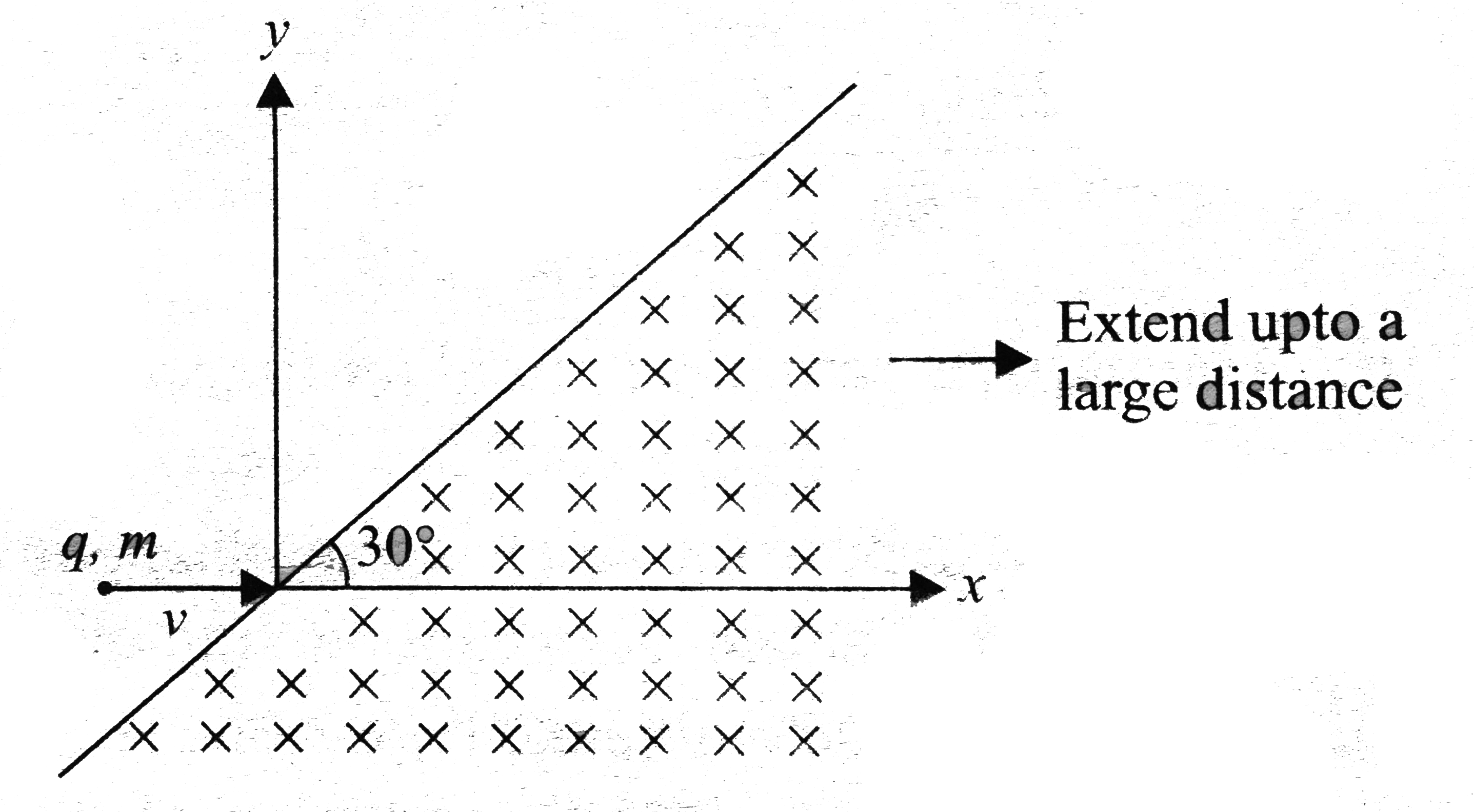A particle of charge 1μC& mass 1g moving with a velocity of 4m/s is subjected to a uniform electric field of magnitude 300Vm for 10sec. Then it's final speed cannot be :
0.5 m/s
4 m/s
3 m/s
6 m/s
The correct Answer is:A
To solve the problem, we need to analyze the motion of a charged particle in a uniform electric field. Here’s a step-by-step solution:
Step 1: Identify the given values
- Charge of the particle, q=1μC=1×10−6C
- Mass of the particle, m=1g=1×10−3kg
- Initial velocity, u=4m/s
- Electric field strength, E=300V/m
- Time duration, t=10s
Step 2: Calculate the force acting on the particle
The force F acting on the charge due to the electric field is given by:
F=qE
Substituting the values:
F=(1×10−6C)(300V/m)=3×10−4N
Step 3: Calculate the acceleration of the particle
Using Newton's second law, F=ma, we can find the acceleration a:
a=Fm=3×10−4N1×10−3kg=0.3m/s2
Step 4: Determine the final speed in two scenarios
1. Acceleration in the direction of motion:
- The final speed v can be calculated using the formula:
v=u+at
Substituting the values:
v=4m/s+(0.3m/s2)(10s)=4+3=7m/s
2. Acceleration opposite to the direction of motion:
- The final speed v in this case is:
v=u−at
Substituting the values:
v=4m/s−(0.3m/s2)(10s)=4−3=1m/s
Step 5: Determine the range of possible final speeds
From the calculations, the final speed can vary between:
- Maximum speed: 7m/s
- Minimum speed: 1m/s
Step 6: Identify which speed is not possible
The possible final speeds range from 1m/s to 7m/s. Any speed outside this range is not possible. Therefore, if we consider a speed like 0.5m/s, it does not fall within the calculated range.
Conclusion
The final speed of the particle cannot be 0.5m/s.
- Charge of the particle, q=1μC=1×10−6C
- Mass of the particle, m=1g=1×10−3kg
- Initial velocity, u=4m/s
- Electric field strength, E=300V/m
- Time duration, t=10s
The force F acting on the charge due to the electric field is given by:
F=qE
Substituting the values:
F=(1×10−6C)(300V/m)=3×10−4N
Using Newton's second law, F=ma, we can find the acceleration a:
a=Fm=3×10−4N1×10−3kg=0.3m/s2
1. Acceleration in the direction of motion:
- The final speed v can be calculated using the formula:
v=u+at
Substituting the values:
v=4m/s+(0.3m/s2)(10s)=4+3=7m/s
- The final speed v in this case is:
v=u−at
Substituting the values:
v=4m/s−(0.3m/s2)(10s)=4−3=1m/s
From the calculations, the final speed can vary between:
- Maximum speed: 7m/s
- Minimum speed: 1m/s
The possible final speeds range from 1m/s to 7m/s. Any speed outside this range is not possible. Therefore, if we consider a speed like 0.5m/s, it does not fall within the calculated range.
The final speed of the particle cannot be 0.5m/s.
Topper's Solved these Questions
- ELECTROSTATICSBOOK - DC PANDEY ENGLISHCHAPTER - ELECTROSTATICSEXERCISE - JEE Advanced
44 Videos
- ELECTROSTATICSBOOK - DC PANDEY ENGLISHCHAPTER - ELECTROSTATICSEXERCISE - Comprehension
36 Videos
- ELASTICITYBOOK - DC PANDEY ENGLISHCHAPTER - ELASTICITYEXERCISE - Medical entrances s gallery
21 Videos
- EXPERIMENTSBOOK - DC PANDEY ENGLISHCHAPTER - EXPERIMENTSEXERCISE - Subjective
15 Videos
Similar Questions
A charged particle of charge 1 mC and mass 2g is moving with a speed of 5m/s in a uniform magnetic field of 0.5 tesla. Find the maximum acceleration of the charged particle
View SolutionA charged particle of charge 1 mC and mass 2g is moving with a speed of 5m/s in a uniform magnetic field of 0.5 tesla. Find the maximum acceleration of the charged particle
View SolutionA particle of mass 2 kg charge 1 mC is projected vertially with velocity k10ms−1. There is as uniform horizontal electric field of 104N/C, then
View SolutionA charge particle of charge q and mass m is moving with velocity v as shown in fig In a uniform magnetic field B along -ve z-direction.Select the correct alternative (s).

View SolutionFind the kinetic energy of a body of mass 1 kg moving with a uniform velocity of 10 ms−1
View SolutionA particle of charge −16×10−18 coo–mb moving with velocity 10ms−1 along the x−aξs, and an electric field of magnitude (104)/(m) is along the negative z−ais. If the charged particle continues moving along the x- axis , the magnitude of B is
View SolutionA particle of charge −16×10−18 coulomb moving with velocity 10ms−1 along the x− axis , and an electric field of magnitude 104/(m) is along the negative z− axis. If the charged particle continues moving along the x- axis , the magnitude of B is
View SolutionA particle of mass m and charge Q moving with a velocity v enters a region on uniform field of induction B Then its path in the region is s
View SolutionA particle having a charge of 100μC and a mass of 10mg is projected in a uniform magnetic field of 25m T with a speed of 10ms−1. If the velocity is perpendicular to the magnetic field , how long will it take for the particle to come back to its original position for the first time after being projected.
View SolutionA particle of mass M and charge Q moving with velocity →v describe a circular path of radius R when subjected to a uniform transverse magnetic field of induction B. The work done by the field when the particle completes one full circle is
View Solution
